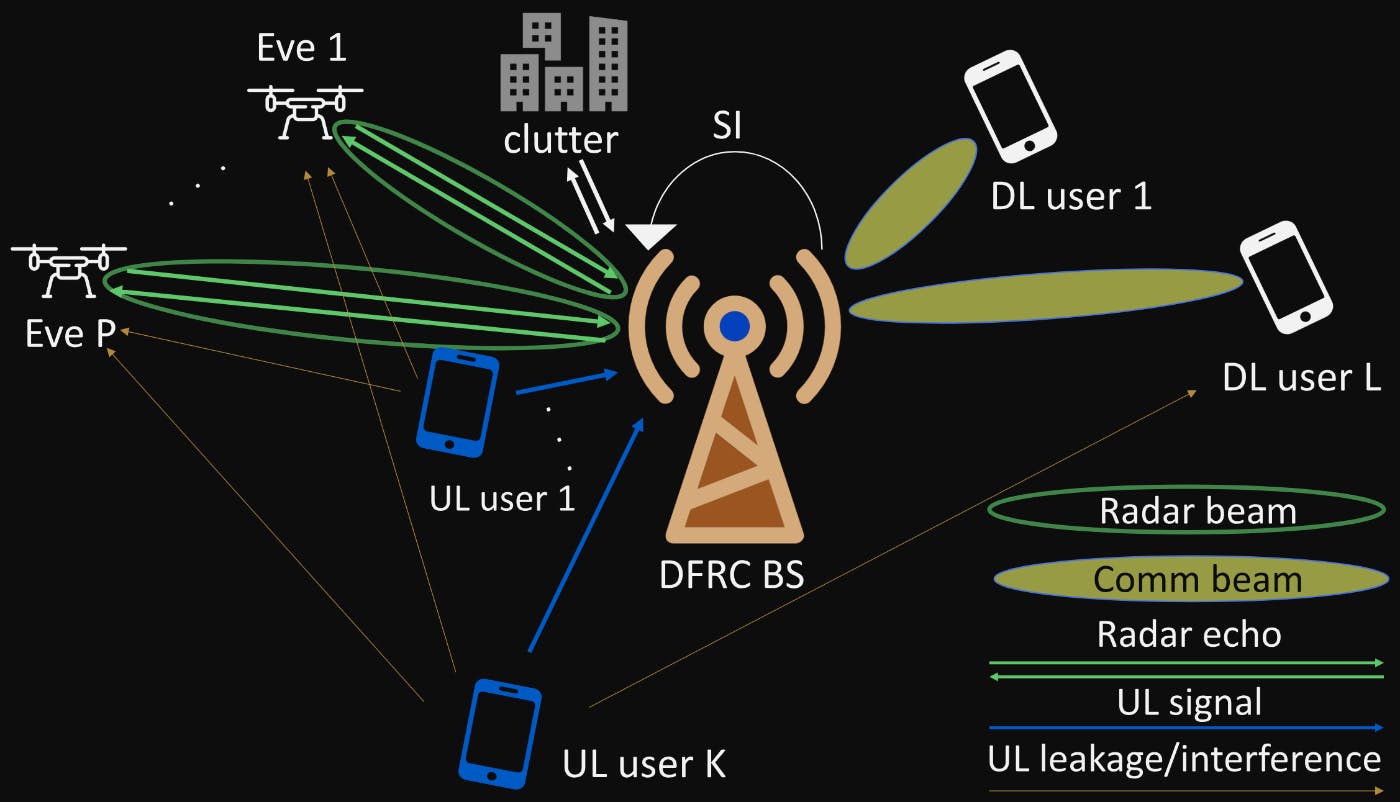In an era where the digital and physical worlds are becoming increasingly intertwined, the next wave of wireless communication technology—6G—promises to blur these boundaries even further. But how on earth do we deal with eavesdroppers? One of the advancements on this frontier is the development of Secure Full Duplex Integrated Sensing and Communications (ISAC), a technology designed to not only enhance communication capabilities but also to provide robust security measures against eavesdropping threats.
As we venture into the possibilities of 6G, the concept of ISAC emerges as a beacon of innovation. ISAC envisions a future where communication systems are not merely passive transmitters of data but active sensors of their environment. This integration promises to open a plethora of applications, from autonomous driving to advanced remote healthcare, by leveraging the dual functionality of sensing and communication. However, with great power comes great vulnerability. The open nature of wireless communication systems makes them susceptible to eavesdropping and data interception.
How does it work?
At its core, Secure Full Duplex ISAC operates on a full duplex protocol, meaning it can simultaneously transmit and receive signals on the same frequency. This is a significant leap from traditional half-duplex systems, which can only do one at a time. By integrating sensing capabilities into this duplex system, ISAC not only facilitates communication but also gathers critical environmental data, enhancing the overall efficiency and functionality of the network.

https://twitter.com/drahmadbazzi/status/1628849453317648386?embedable=true
The innovation doesn't stop there. To counteract potential eavesdroppers, Secure Full Duplex ISAC employs advanced beamforming techniques and artificial noise generation. These strategies are ingeniously designed to illuminate radar beams towards potential threats, thereby sensing their presence while obscuring the communication signals from unauthorized interception. This dual approach of communication and sensing, fortified with robust security measures, sets a new benchmark for wireless communication systems.
What does that mean ?
The implications of Secure Full Duplex ISAC for the future of telecommunications are profound. Imagine autonomous vehicles that not only communicate with each other to prevent accidents but also sense their surroundings to navigate more efficiently. Picture smart cities where public infrastructure communicates seamlessly, sensing environmental changes and enhancing public safety in real-time. Moreover, the security benefits of Secure Full Duplex ISAC cannot be overstated. In an age where data breaches and cybersecurity threats loom large, the ability to secure wireless communications against eavesdroppers is invaluable. This technology promises a future where our communications are not only faster and more reliable but also significantly more secure.
Cryptographic approaches do offer a certain level of security in the network, however, the rapid developments made in computing power devices show that even the most mathematically complex secret key-based techniques can be broken, especially when quantum computing becomes a reality [8]. Therefore, an extra level of security should rely on physical layer design, without the need for secret-key exchange, to maintain secure transmissions especially when both SAC information are revealed to malicious users.
Navigating the evolution of wireless communication presents a blend of hurdles and prospects. At the heart of this evolution, Secure Full Duplex Integrated Sensing and Communications emerges as a pivotal force, signaling a shift towards a realm that's increasingly interconnected, insightful, and critically, more safeguarded. On the cusp of embracing 6G technology, it's imperative that future designs prioritize the secure integration of ISAC. This approach doesn't merely hold promise; it heralds a transformative potential that's beyond measure.

